The communist assault commenced at dawn. After a thunderous artillery barrage, thousands of Korean People’s Army (KPA) troops poured across the 38th parallel at first light on June 25, 1950. It was a classic Soviet-style assault.
The Soviet Advisory Group that arrived in North Korea during late 1949 contained several Soviet generals with combat experience recently gained in World War II. At the same time, the communist Chinese reinforced several North Korean divisions with up to 70,000 combat-hardened veterans of the Chinese Civil War. While Mao sent men, Stalin supplied warplanes, artillery and, most importantly, tanks. The South Koreans had zero tanks to oppose them, and few anti-tank weapons of any note.
Just like in World War II, the Soviets matched armor against infantry and began their onslaught with a massive preparatory barrage. Although inexperienced, the North Korean tankers found little to oppose them and routed the ROK forces, their tanks swiftly rumbling on to Seoul.
The Communists’ Armored Advantage
In North Korea, the KPA leveraged its considerable intelligence assets operating in the South to determine that the ROK was essentially defenseless against tank attack. Their Soviet sponsors were quick to respond, providing nearly 260 T-34/85 tanks to North Korean forces, along with a basic level of training, by the beginning of the war. Almost overnight, the KPA fielded a significant tank force comprised of modern vehicles.
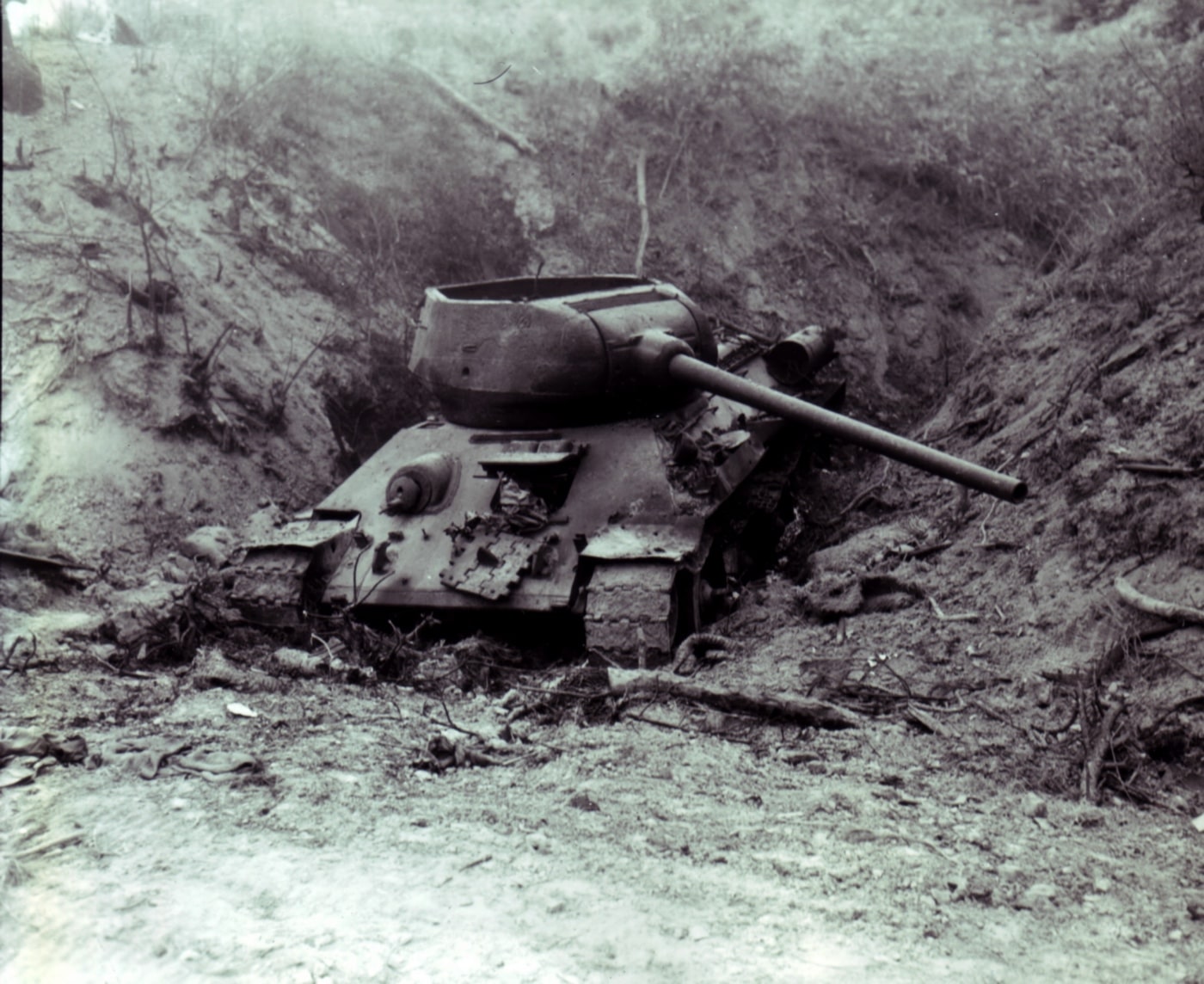
The T-34/85 was arguably the best medium tank of World War II. In the quickly escalating war of tank/anti-tank technology on the Eastern Front, tanks of the Soviet Union were falling behind by the middle of 1942, and that their initial technological advantages over Hitler’s panzers had been lost.
With this as a driving force, a new “universal tank” was envisioned to replace the T-34 (76mm gun) medium tank and the KV-1 (76mm gun) heavy tank. Unfortunately, the new prototype, dubbed T-43, quickly showed significant flaws — its armor was considered too thin, and its overall mobility less than the existing T-34. Furthermore, despite sharing many parts with the T-34, the T-43 was projected to be rather expensive, and worse, too slow to quickly build in quantity.
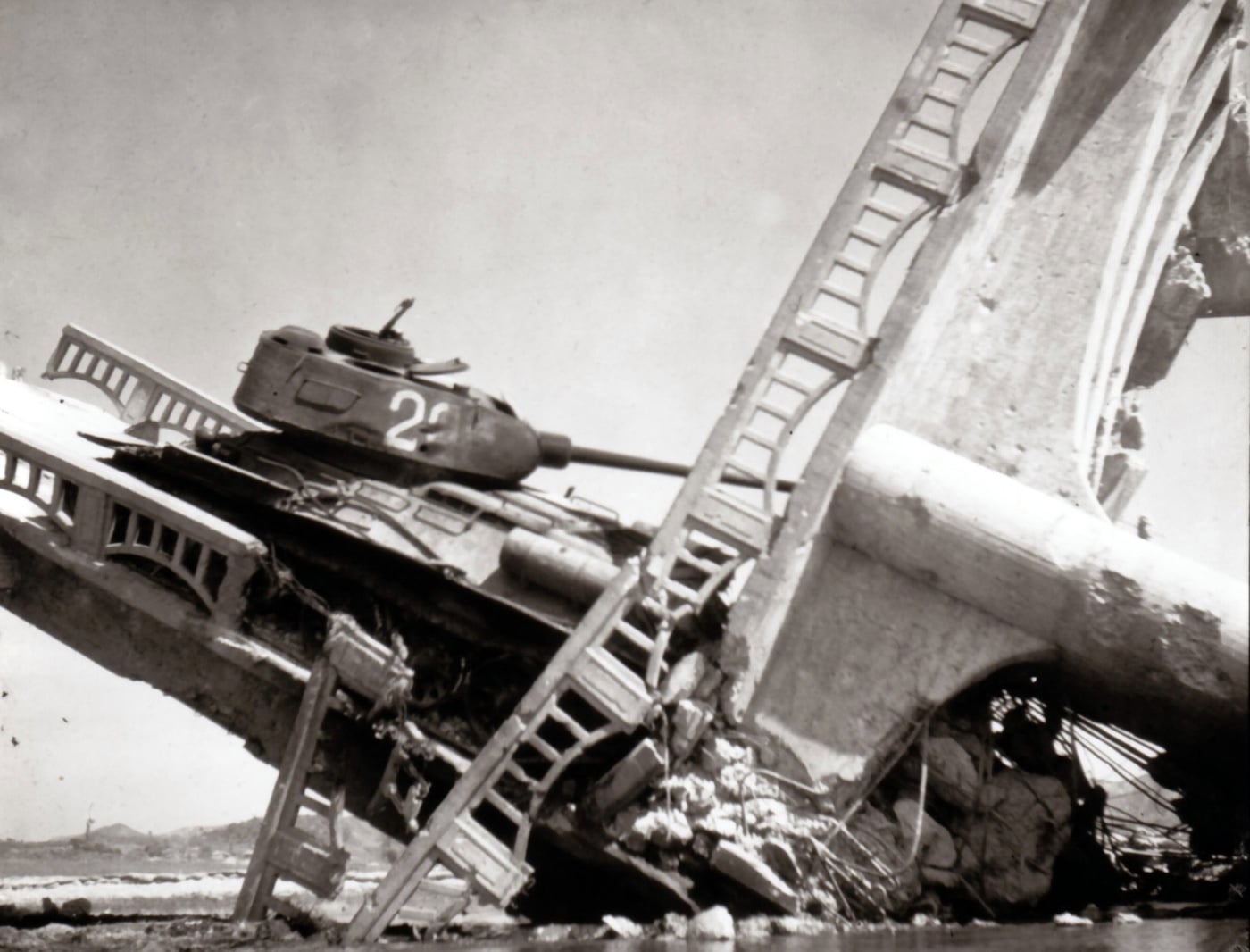
Consequently, the Red Army pursued a compromise solution, creating an upgraded T-34 that could provide a quick and significant upgrade on the battlefield, while not upsetting the manufacturing process.
The redesign featured a powerful, long-barreled gun: the Soviet 85mm M1939 (52-K) anti-aircraft gun. The big gun was 15’, 2” long and created a distinct overhang beyond the chassis. Care had to be taken when travelling over uneven terrain to not plow the barrel into the earth. Even so, the 85mm ZiS-S-53 provided a serious upgrade in firepower, giving Soviet tankers a solid chance against German Panther and Tiger tanks at 500 meters. U.S. tests on a captured T-34/85 showed the 85mm gun could penetrate 100mm of armor plate at 1,000 yards.
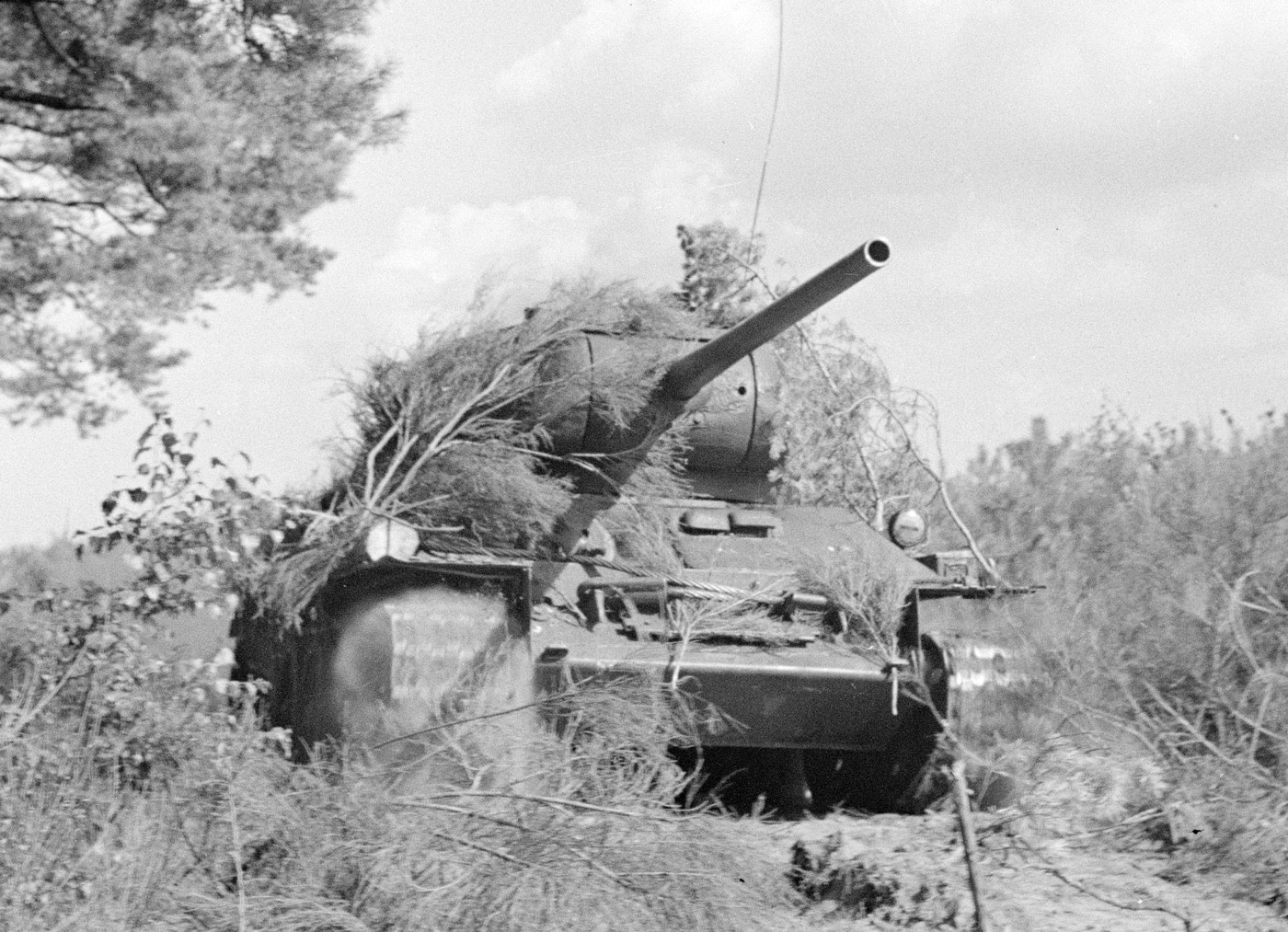
The new T-34/85 featured a greatly enlarged turret compared to its predecessor, able to accommodate the 85mm gun, a radio, a commander’s cupola and three men. The commander could now focus on his specific job, with a gunner and loader in the turret to ease the workload.
Accuracy and overall efficiency increased. So too did the armor protection, climbing to 90mm on the turret front. Mobility also remained high. And the T-34/85 remained a relatively simple tank to operate, which fit the needs of a developing Third World nation like North Korea.
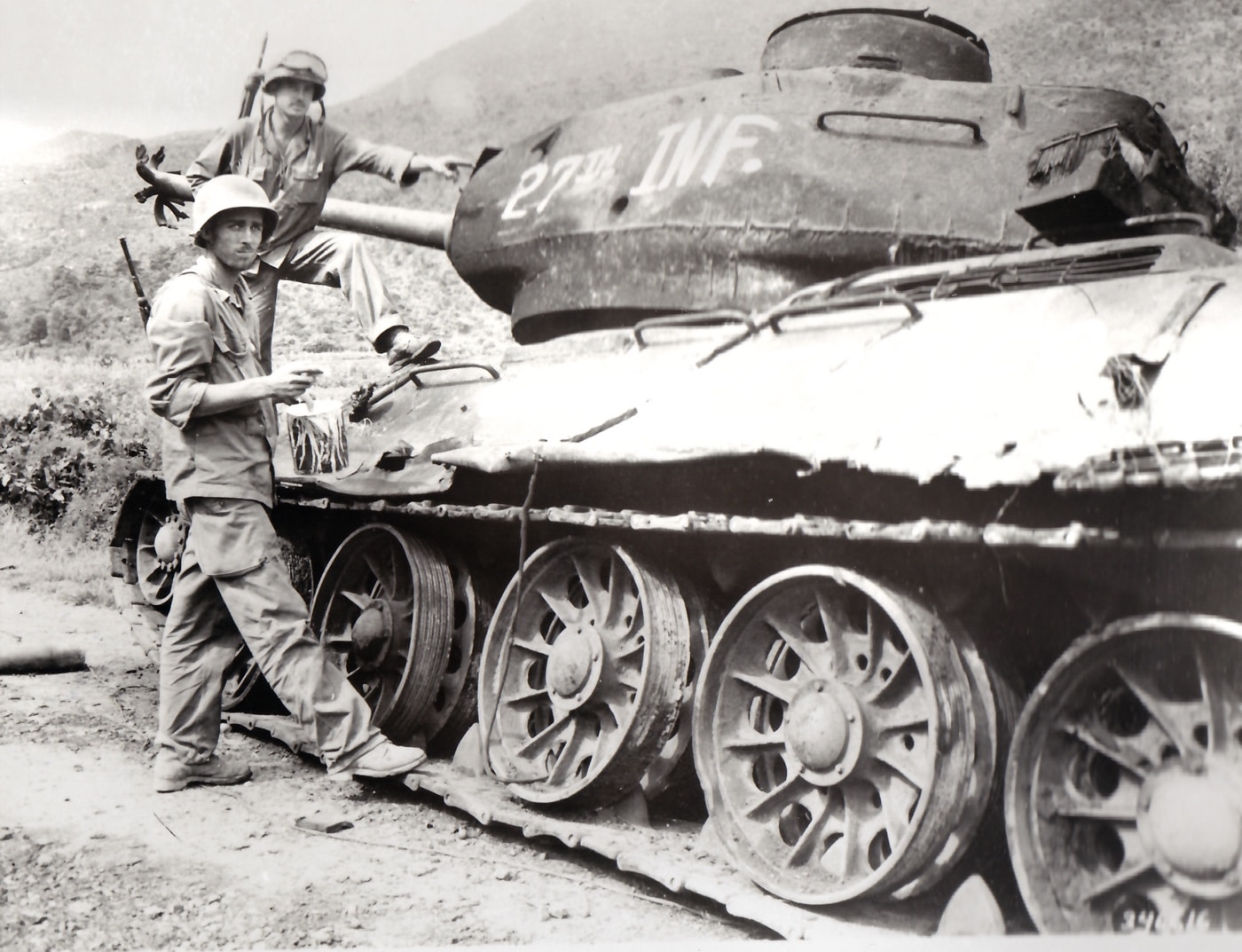
As the Soviets introduced the T-54/T-55 into service during 1948, and with those numbers growing each year, the Red Army had a surplus of T-34/85s (more than 22,500 were made during WWII alone). The stage was set for an armored invasion of South Korea, led by more than 200 T-34/85s.
Tribulations of Task Force Smith
“If the Communists were permitted to force their way into the Republic of Korea without opposition from the free world, no small nation would have the courage to resist threat and aggression by stronger Communist neighbors.” President Harry S. Truman 1950
American forces responded quickly to defend their South Korean allies, but at first there was very little available in Asia to fight back with. By July 5th, a small battle group titled Task Force Smith (drawn from the 24th Infantry Division in Japan), attacked North Korean forces at Osan. Like the South Koreans before them, this small American force found itself unprepared to deal with the North Korean T-34/85 tanks.
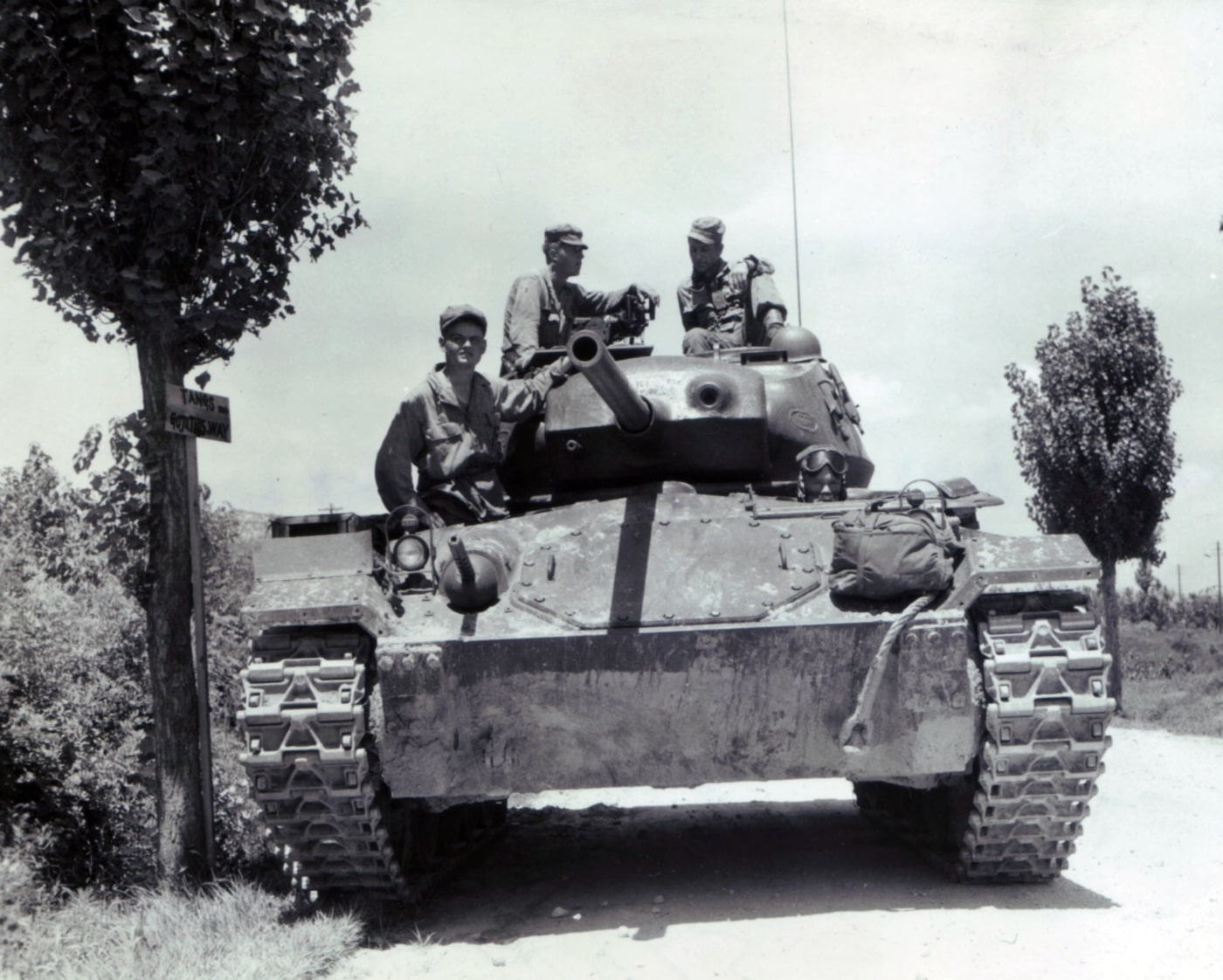
The first American tanks to engage the KPA T-34s were M24 Chaffee light tanks. The Chaffee’s 75mm M6 gun was a low-velocity weapon with sorely limited anti-tank capability, while the M24’s armor was thin (38mm max protection). To make matters worse, many of the M24s were worn out and had been poorly maintained in Japan, and reliability was a problem. KPA tanks mauled the M24s — for example, one company of the 78th Tank Battalion lost 12 of their 14 tanks in less than a month. The T-34/85 was quickly gaining a reputation as “unstoppable”.
Before the debacle at Osan, Brigadier General John H. Church, in charge of the U.S. GHQ Advance Command and Liaison Group (ADCOM), spoke to Lieutenant Colonel Charles B. Smith (Task Force Smith) and reportedly said: “All we need is some men up there who won’t run when they see tanks.” What General Church did not realize was that the men of Task Force Smith did not lack bravery; they were without effective anti-tank weapons.

One of the hidden problems American troops faced in the first days of the communist assault in Korea was that many of the weapons brought over from Japan had been improperly stored while the U.S. Army was on occupation duty there. The most significant issue was with the WWII-era 2.36” Bazooka rockets.
The rocket propellant and hollow charge warheads of the AT projectiles did not age well, and after a few years of storage in a humid, salt-air environment, many failed to function. Some rockets would not launch. Others launched, but the M6A3 warhead did not explode when they hit.
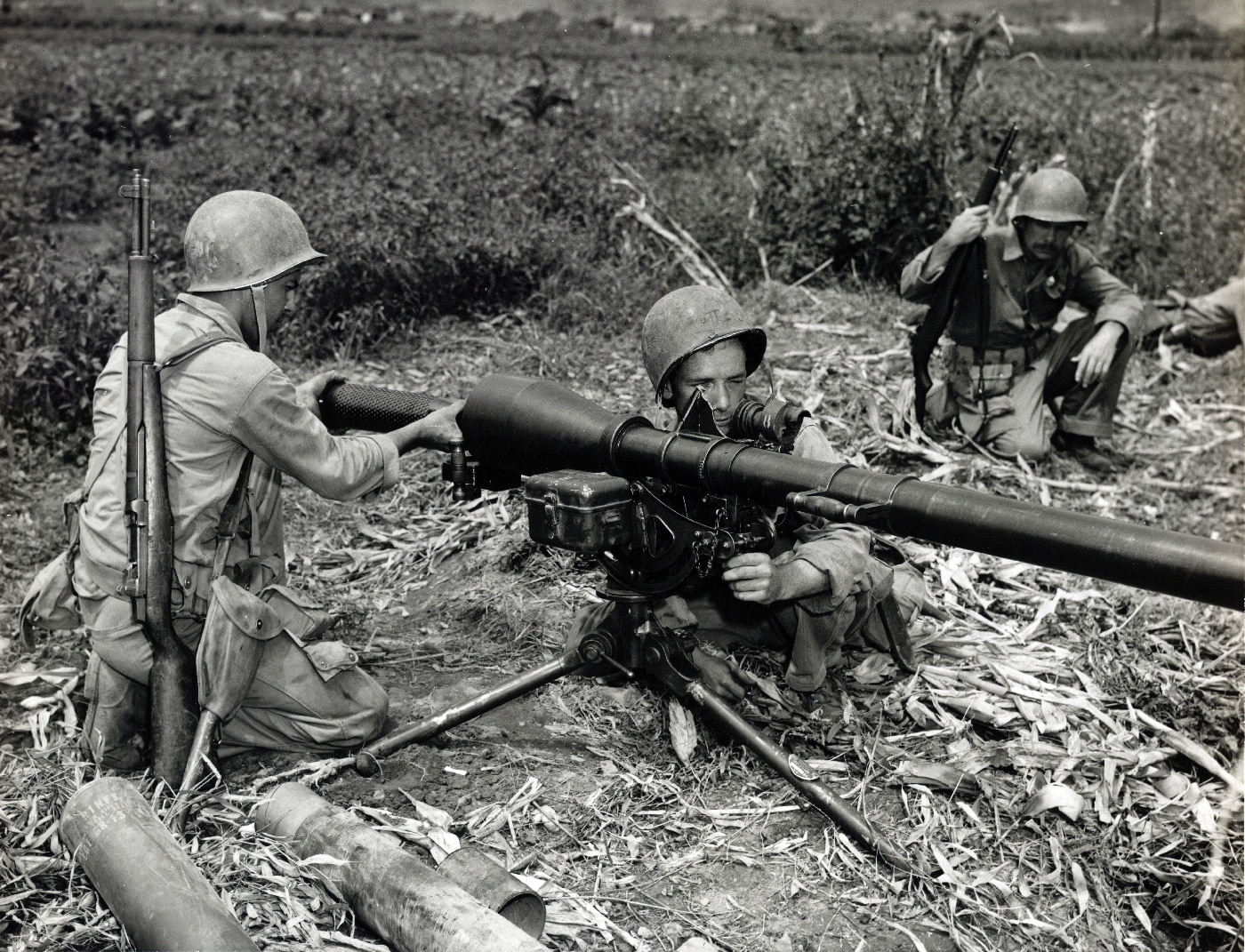
The initial reaction of the G.I.s was that they were defenseless against the North Korean tanks, and at that time, within that context, they were. If the early model bazookas had “fresh ammunition,” they could in most cases penetrate the armor of a T-34/85, provided they hit the tank in the side or the rear.
The small numbers of 75mm recoilless rifles also proved ineffective in the anti-tank role. The early battles in 1950 made the Communist T-34s in Korea seem like Nazi Tigers in Europe during WWII. Wild rumors continued to spread among the G.I.s, and “tank terror” was beginning to set in.
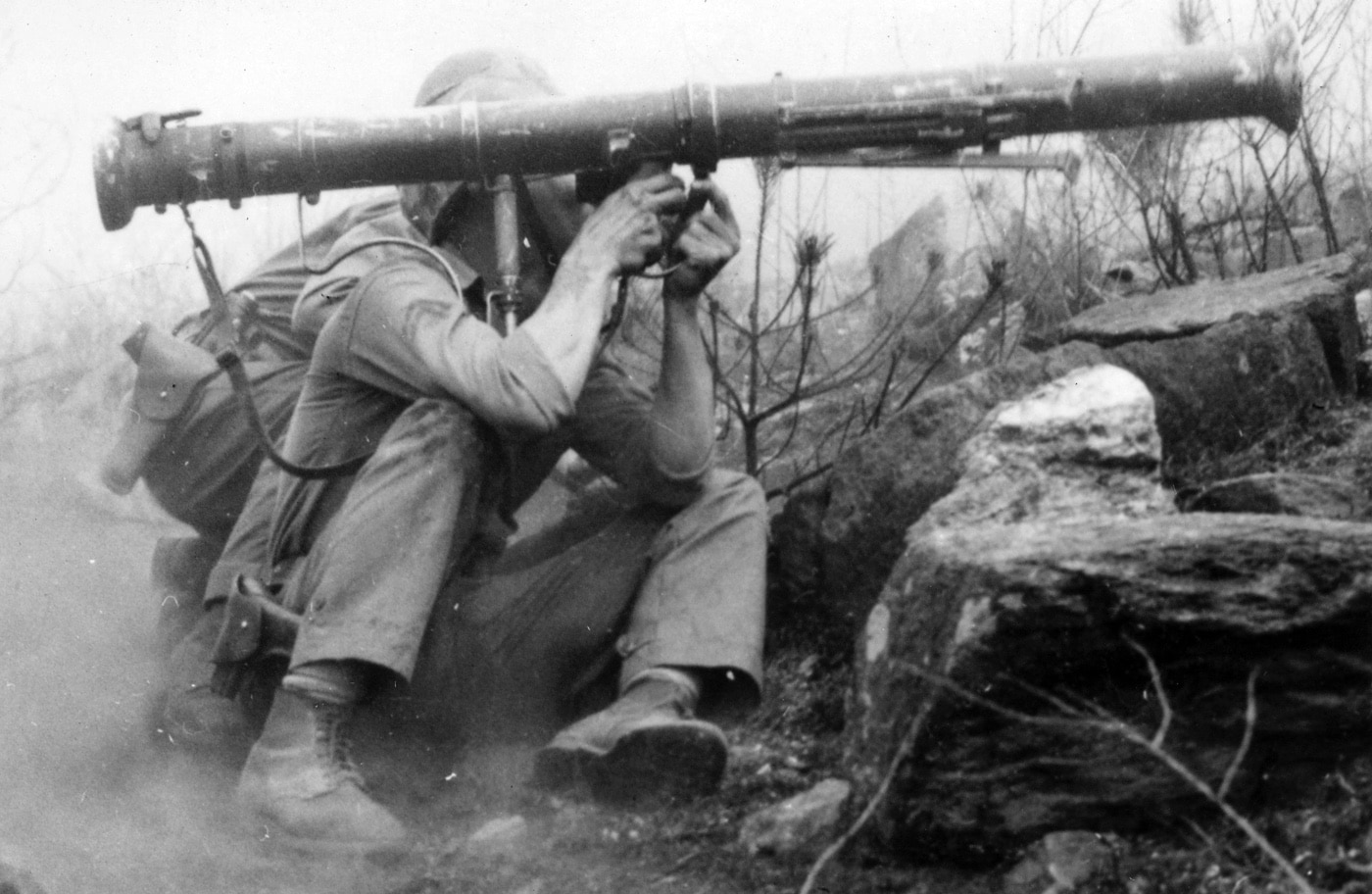
The 1992 U.S. Army report by Arthur W. Connor Jr, “The Armor Debacle in Korea 1950: Implications for Today”, details the early frustration in fighting the T-34/85s:
“Posted into position north of Osan, the Americans met the advancing enemy on the morning of 5 July. At 0800 hours, the six howitzers began firing at eight Russian-built T-34 tanks that were bearing down on the task force positions. The tanks were impervious to the artillery fire, and recoilless rifle and bazooka fire also had no effect. Within two hours, 33 North Korean T-34 tanks had passed through the American positions, while Task Force Smith had been able to damage only two of the attacking tanks. A second wave of tanks cut through Task Force Smith an hour later, and at 1145 hours three tanks led the 16th and 18th Infantry Regiments of the North Korean 4th Division in an assault on the American infantry positions, routing them.”
Help On the Way
Before things got better, the anti-tank situation in Korea got worse. A huge indictment of the older bazooka came on July 8th, when Colonel Robert Martin of the 24th Infantry Division was killed while attempting to stop a T-34 with a 2.36” bazooka. In response, the Army airlifted a handful of M20 3.5” “Super Bazookas” available stateside to the Korean battlefield. The M20s were in the hands of the troops by July 18th, just in time for the desperate defense of Taejon (now known as Daejon).
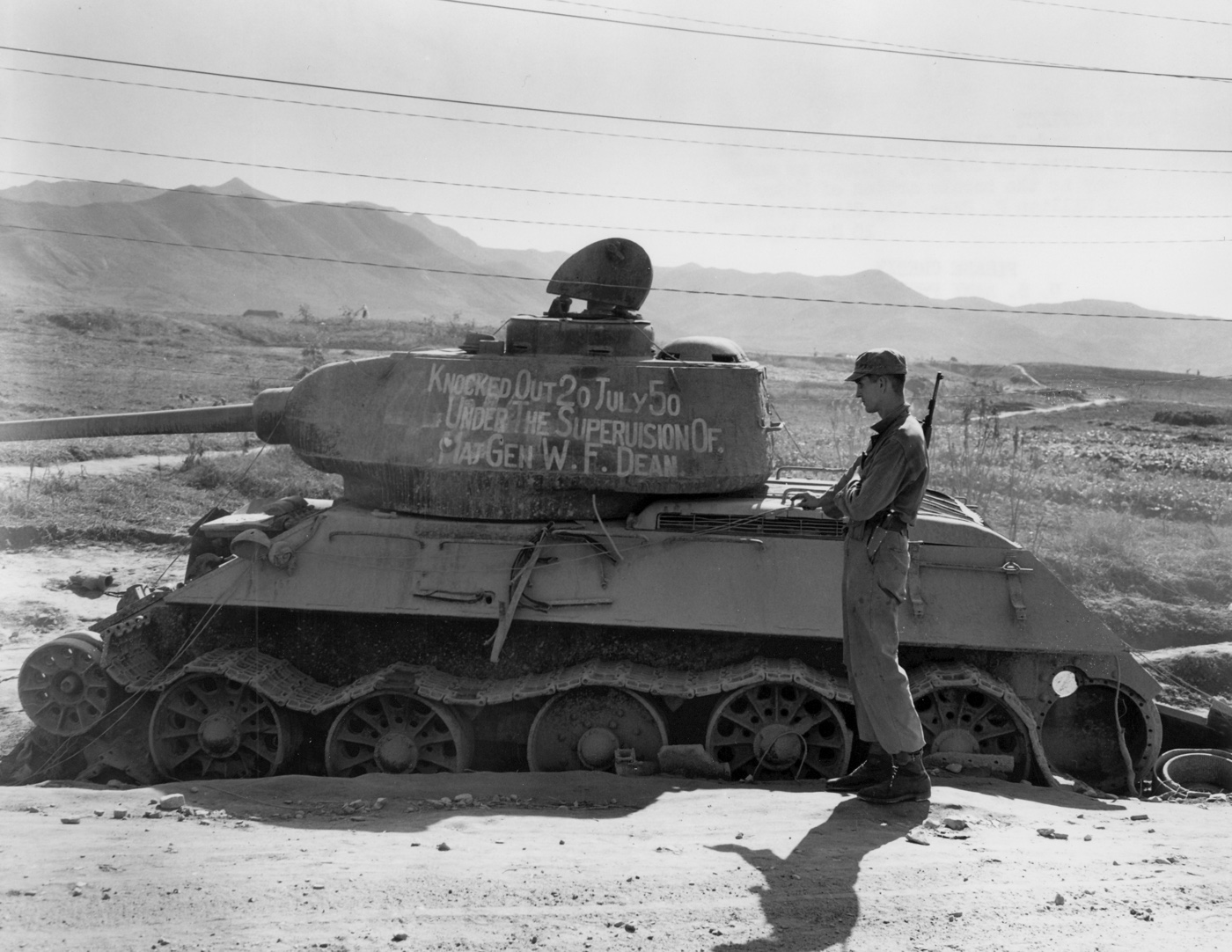
The T-34s led the North Korean attack in the Battle of Taejon beginning on July 20th, and suddenly the communist tanks had to deal with bazooka teams with capable weapons within tight urban confines. Major General William F. Dean personally led several tank-hunting missions with the new super-bazooka.
After some frustration, Gen. Dean and his bazooka gunner found themselves looking out a second-story window, with a T-34 less than 10 yards away. The gunner fired at the turret ring. The T-34 caught fire and Dean reported hearing “horrible screaming” from the crew trapped inside. Two more rockets hit, and the screaming stopped.
By the end of the fierce battle of Taejon, U.S. forces had destroyed eight of the 10 T-34s active in the city — six by the super-bazookas and two by artillery. Even so, KPA forces took Taejon and inflicted heavy casualties on the 24th Infantry Division — with more than 3,600 dead and wounded and nearly 3,000 captured, including General Dean. But the mystique of the communist T-34’s invincibility was beginning to fade.
American Armor Arrives
In the summer of 1950, there were precious few tanks available to the hard-pressed forces in Korea. Other than the weary M24 Chaffee tanks on occupation duty in Japan, the entire Asian area did not merit the allocation of medium or heavy tanks.
U.S. commanders scoured depots in Japan and found three M26 Pershing medium tanks (90mm main armament) that were out of service with electrical and engine troubles. These were hurriedly rebuilt and sent to Korea as a provisional tank platoon.
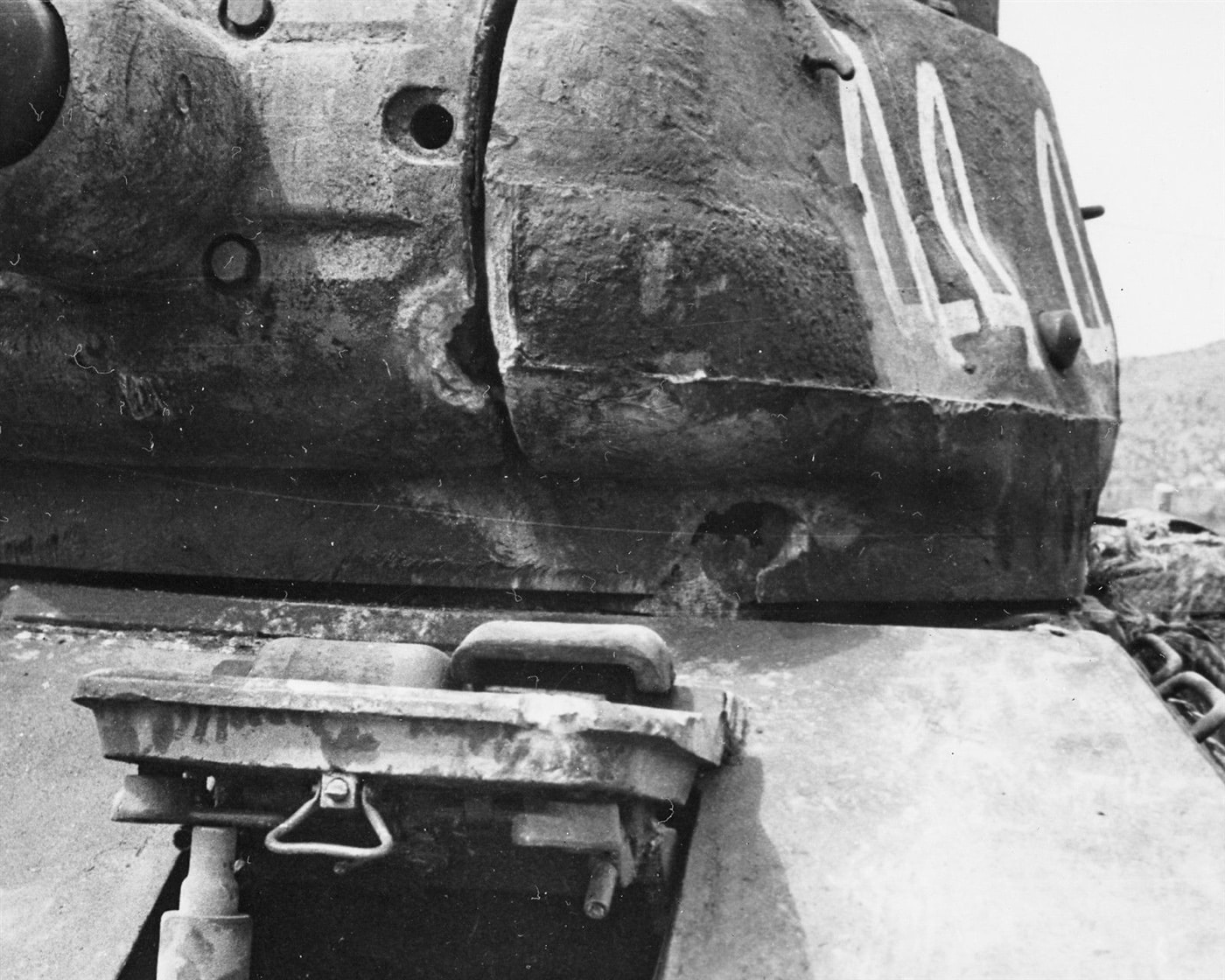
Meanwhile, the 70th Tank Battalion was hurriedly pulled together at Fort Knox, including a company of M26 tanks that had most recently been “gate guardians”, mounted on pedestals at the American armored base. The 70th arrived in Korea on August 7th and went immediately into combat.
By mid-August, more and more American units received the M20 bazooka and M26 Pershing tanks, including the Marines. The U.S.M.C. publication “Our First Year in Korea, Accounts by the Historical Branch, G-3”, describes some of the Leathernecks’ first armored engagements against the Reds:
“Up to this time Company A of the 1st Tank Battalion had encountered no enemy armor. But on the evening of 17 August a Marine tank platoon, supplemented by 75mm recoilless and 3.5 rocket fires, finished off the three hostile tanks in a few seconds, killing all crews. More lessons would be needed, however, before the enemy amended his suicidal tactics of attempting to harass infantry or raid supply lines with unsupported armor. Meanwhile, the Marines continued their close cooperation between tanks and infantry, each supporting and protecting the other.”
On September 5th, near Yongsan:
“Another NK counterattack developed at 1410 in the 1st Battalion area as an estimated 300 enemy struck with three tanks. Two of our M-26 tanks, firing on troop targets in infantry support, did not observe the approach of the T-34s and were disabled by enemy tank fire, though both crews escaped. All three NK tanks were destroyed by rocket fire laid down by the 1st Battalion.”
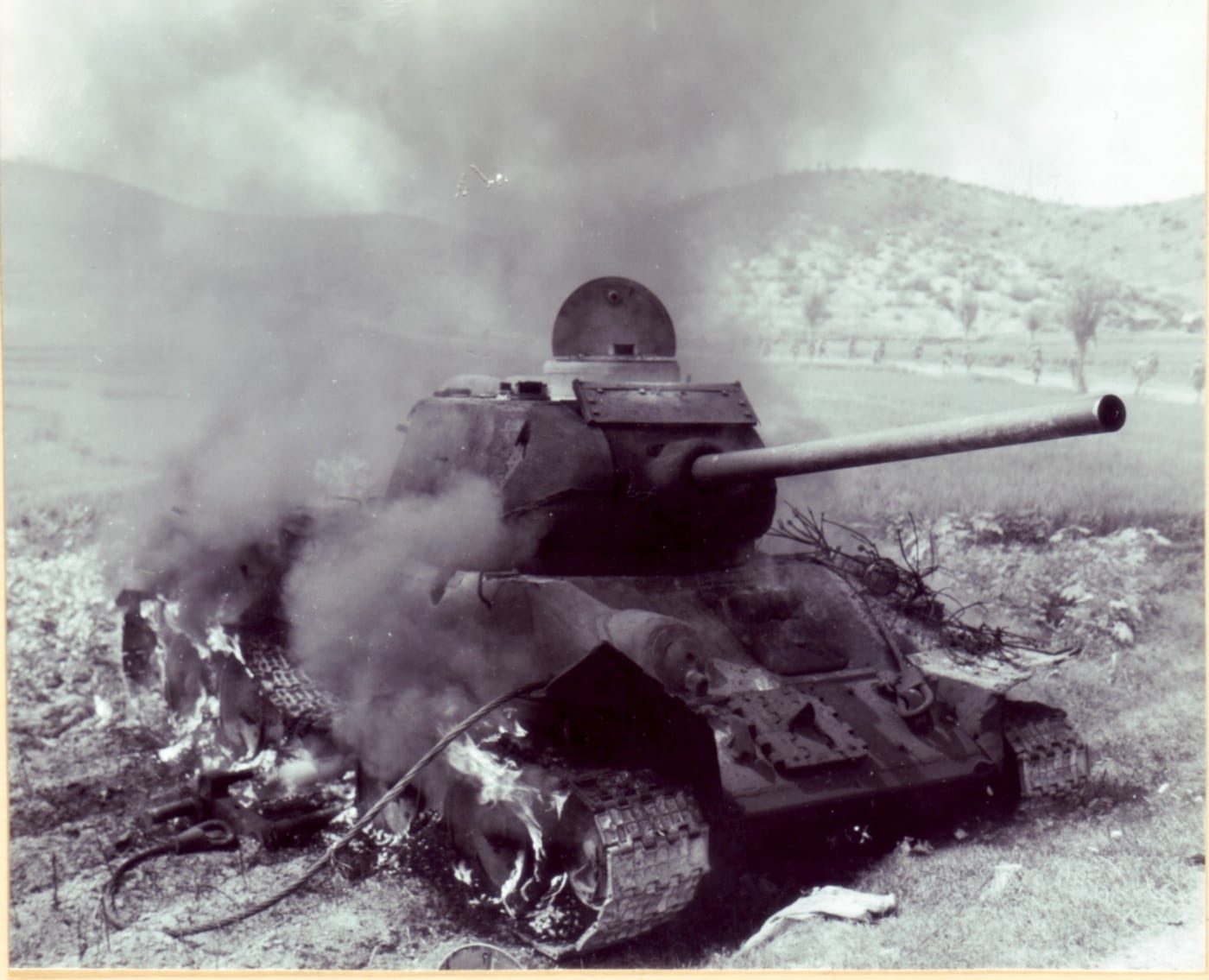
In the developing Battle for Seoul:
“It was in the same spirit that Corporal Okey J. Douglas, of D Co, RTC-5, did the planning for his bazooka team on that Sunday morning. The problem, as six T-34 tanks approached at dawn, was the supposed impossibility of knocking them out with a 2.36-inch rocket launcher. The solution, as grasped by Corporal Douglas, was to hit the enemy armor at a range suggesting boxing gloves rather than bazookas. Thus, as the North Korean machines clanked around a bend in the road, Corporal Douglas held his breath and his fire.
This was the best organized North Korean counterattack since the (Inchon) landings, for about 200 infantrymen accompanied the tanks. Fire was opened by all weapons after the Marine tanks set the example. The six T-34’s and accompanying infantry were trapped beyond hope of escape when the Leathernecks cut loose with everything they had. Corporal Douglas hit the first enemy tank in the right front bogie at a range of 75 yards. As it spun off the road in flames, his next 2.36 rocket struck the second tank at the base of the turret. Clouds of smoke poured from the cripple, which was speedily finished off along with the four others by friendly tanks, 3.5-inch rockets, and 75mm recoilless fire. Meanwhile, the enemy infantry detachment was completely wiped out by automatic fire poured in from surrounding heights.
It is not often that a Leatherneck is decorated for skepticism as well as bravery. But Corporal Douglas was recommended for a Bronze Star because of “great courage,” and the citation added that he “performed these actions in spite of intelligence that this type of tank could not be destroyed with his weapon.”
One War After Another
In August, U.S. tanks were arriving in Korea in dramatically increasing numbers. By September, the number of U.S. tanks available was at least equal to the North Korean T-34s, with many more American medium tanks in combat, particularly the M26 Pershing. The M26’s 90mm gun quickly proved to be a potent antidote to the T-34/85.
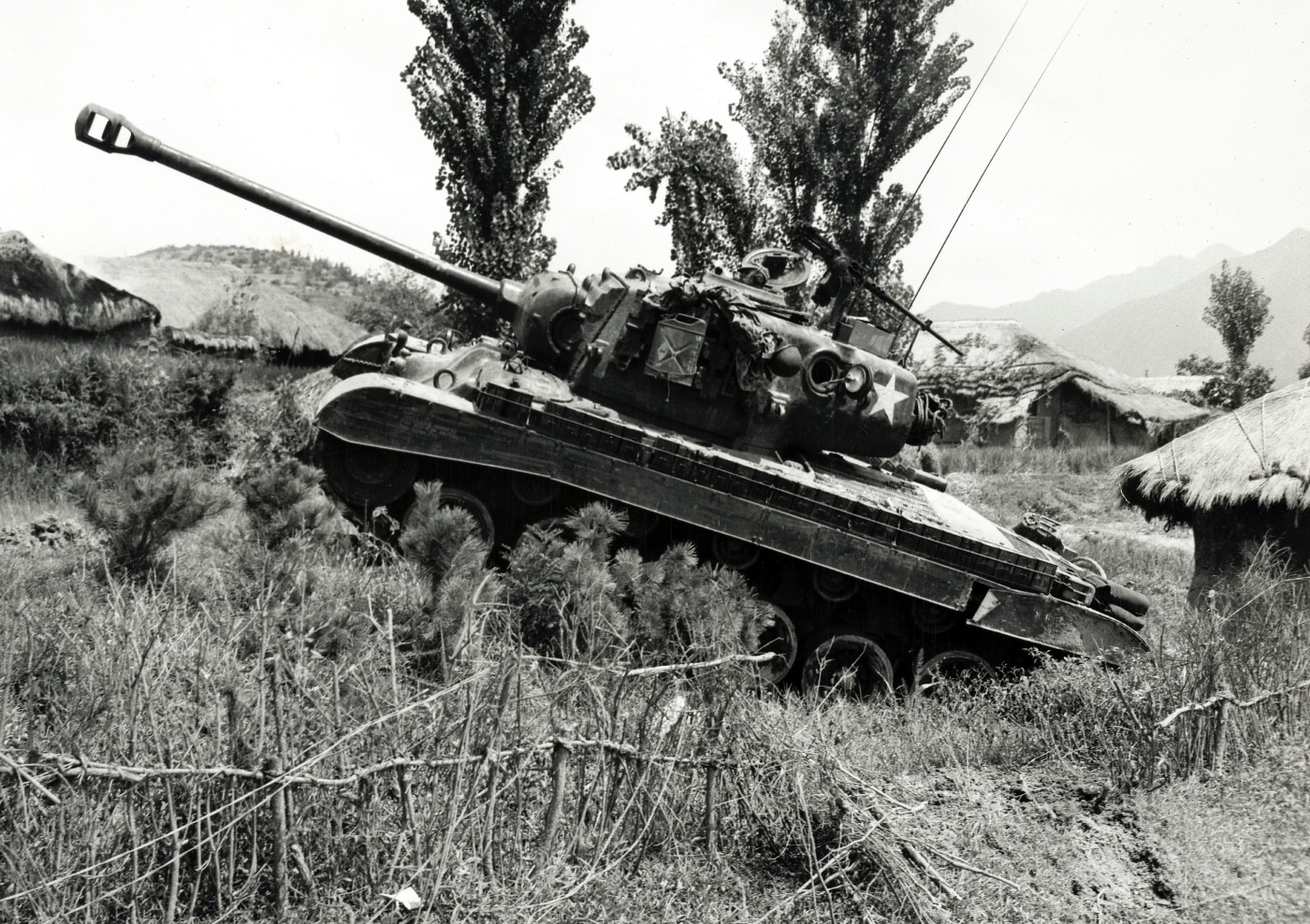
By the end of 1950, more than 300 Pershing tanks were fighting in Korea, and were credited with 29 North Korean tanks and self-propelled guns destroyed (T-34/85s and Su-76 SP guns). In addition to the Pershing tanks, U.S. forces were also equipped with M4A3E8 (“Easy Eight”) Sherman, equipped with a 76mm gun.
Although the Pershing was proven to be about three times more effective than the Sherman in tank fighting, the M26 suffered from a weak powertrain and was difficult to maintain in the mountainous Korean terrain.
Using High Velocity Armor Piercing (HVAP) ammunition, the Sherman could handle the T-34/85 at normal ranges — and the two vehicles were basically evenly matched, with the Sherman, and American tanks across the board, having an advantage in crew survivability. North Korean tank crews suffered badly, with estimates of more than 60% becoming casualties.

When American tanks were hit, they were far more likely to be recovered, repaired and returned to service. As UN forces went on the offensive, and the threat from T-34s minimized, nearly 70% of the U.S. tanks lost in Korea were to mines. As tank fighting decreased, so too did the number of M26 tanks. The Pershings were replaced by the more reliable Shermans, and eventually by M46 Patton tanks.
At the end of WWII, the T-34/85 was considered one of the best tanks of the war. For a few weeks in the summer of 1950, it was thought to be unstoppable by some and proved a nightmare for several UN infantry units unprepared to face them. By the end of 1950, the mystique of the T-34/85 was broken, and nearly 240 were found wrecked on the battlefields of Korea. U.S. and United Nations forces had learned never to neglect their anti-tank capabilities.
As for the T-34, it would soldier on, particularly in communist nations, for another 50 years. By the start of a new millennium, the T-34/85 had fought in the Hungarian Revolution of 1956, the Arab-Israeli Wars in 1956, 1967 and 1973, the Vietnam War, in Namibia and Angola in the 1970-80s, the Iran-Iraq War in the 1980s, and the Yugoslav Wars of the 1990s. A handful were used in the recent Syrian Civil War. Even today, some T-34/85s are suspected to be part of the Cuban and North Korean arsenals, waiting for one more chance to go to war.
Editor’s Note: Please be sure to check out The Armory Life Forum, where you can comment about our daily articles, as well as just talk guns and gear. Click the “Go To Forum Thread” link below to jump in!
Join the Discussion
Read the full article here








